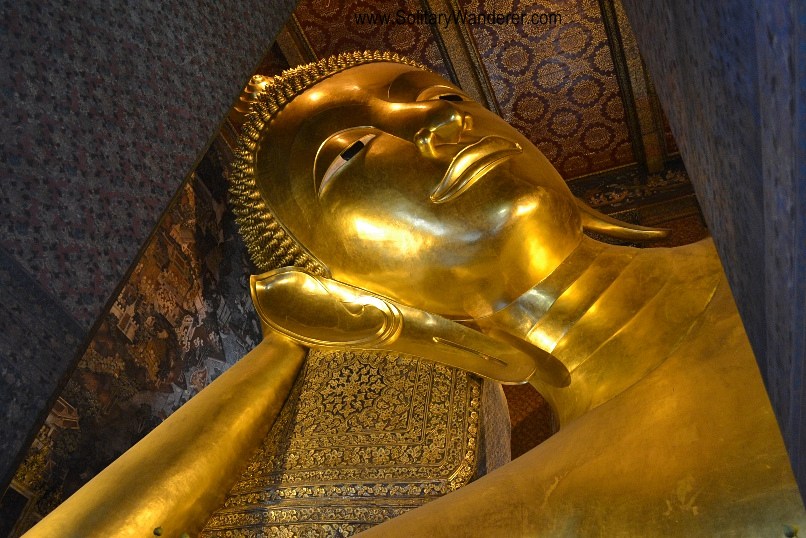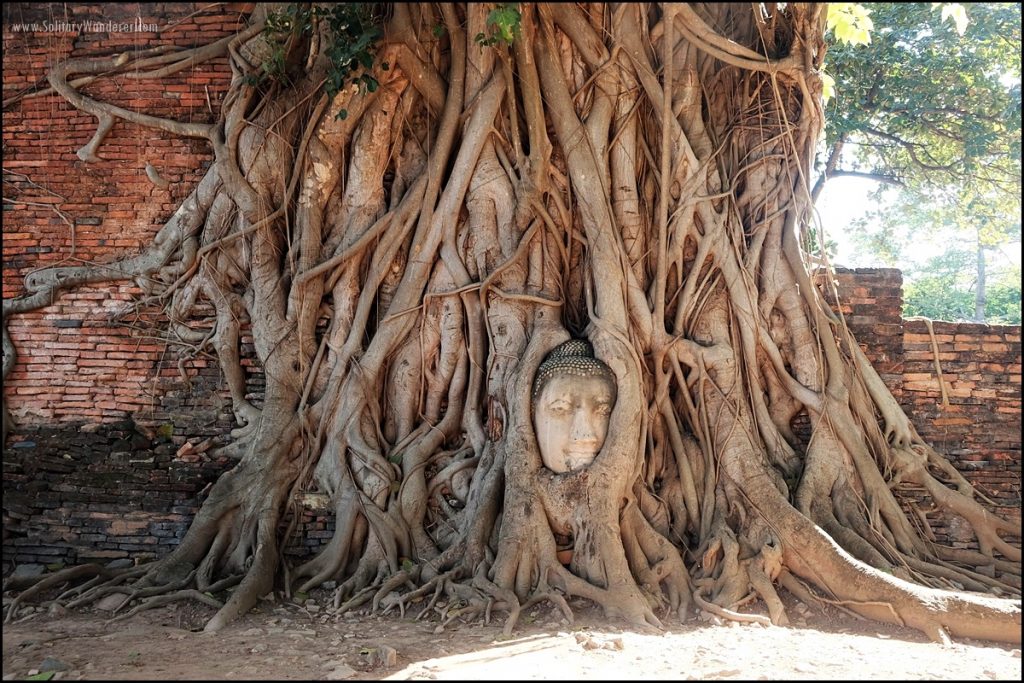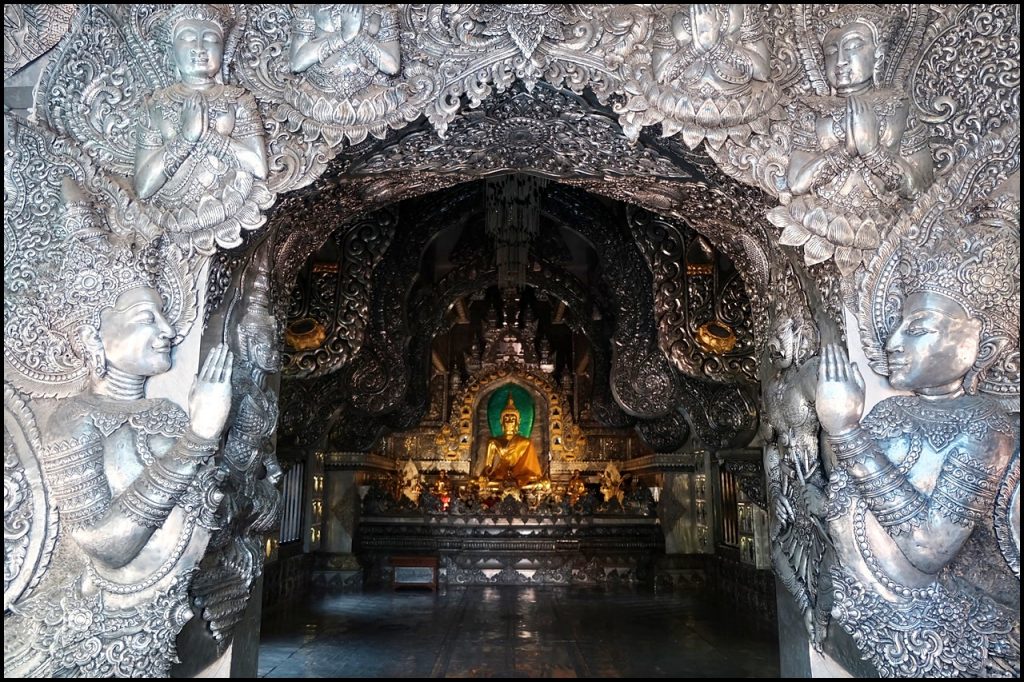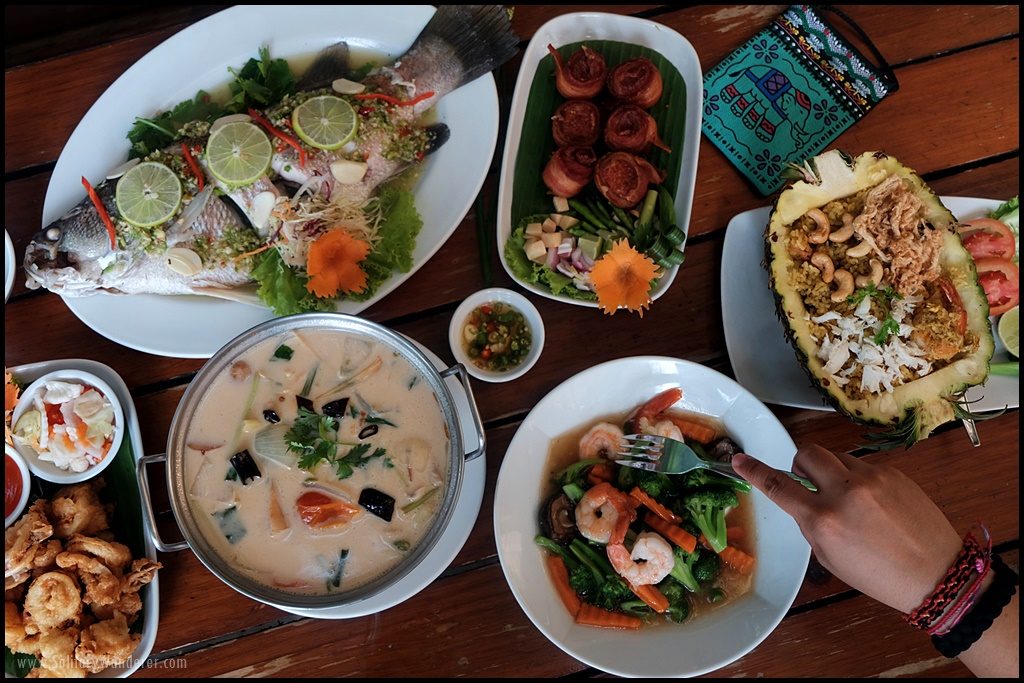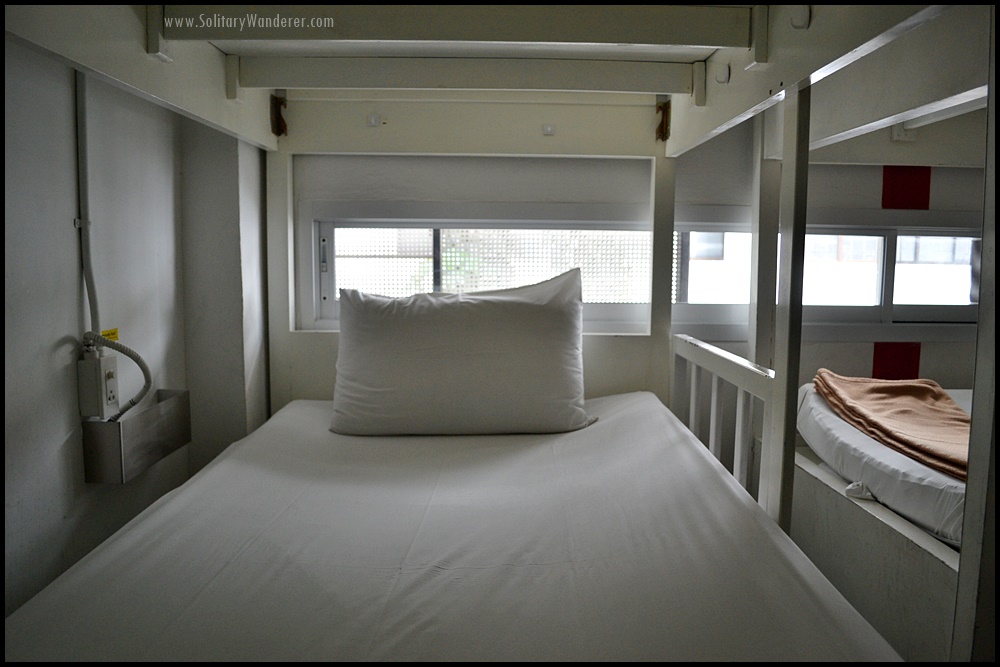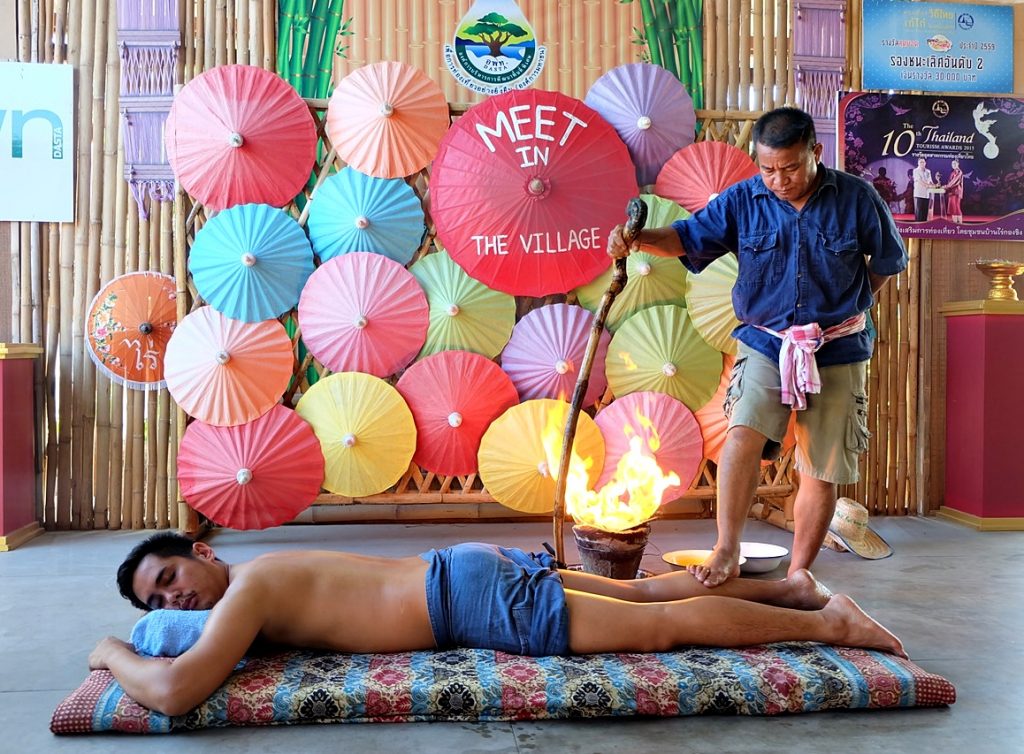I love Thailand; it has everything! Great food, historic sites, spectacular underwater scenery, and most important for me, it’s really friendly to solo travelers. I have lots of solo travel tips for Bangkok; I lived there for 5 months and could have stayed much longer. A fellow blogger, Cat Roberts, offered to write this post to guide travelers (like you) in planning your Thailand trip. Bookmark the page! (All photos are mine.)
Are you planning an epic trip to Thailand and seeking insider tips to make it unforgettable? Look no further!
Get ready to explore the vibrant culture, stunning landscapes, and mouthwatering cuisine that Thailand has to offer.
As someone who has been traveling full-time for 2.5 years and constantly planning trips, I can assure you that I am not only an expert on Thailand but also on travel planning.
My first experience with Thailand was incredible; I fell in love with the country during my 2-month backpacking adventure, and decided to return to live in Chiang Mai for 3 months.
I’ve explored the country from top to bottom, from the stunning Silver Temple in Chiang Mai to the exhilarating scuba diving adventures in the Similan Islands. So believe me when I say I know a thing or two about planning a trip to Thailand.
Get ready to discover my top insider tips for planning the perfect trip to Thailand. From the best time to visit to must-see attractions, how much to budget, and maximizing your time, I’ve got you covered.
Top Places to Visit in Thailand
While planning a trip to Thailand, it’s important to know that there are three main regions to explore: Central Thailand, Southern Thailand, and Northern Thailand.
Each region has its own unique attractions and experiences to offer, from the bustling city life of Bangkok to the idyllic beaches of the south and the stunning mountains of the north.
Travelers often visit more than one region during their trip, depending on how much time they have. These are the most popular places to visit in Thailand for first-time travelers.
Central Thailand
Central Thailand is home to the busy and vibrant city of Bangkok, one of the most iconic metropolitan hubs in Southeast Asia. Chances are that your international flight will land in Bangkok, so it’s a great place to start your trip. Buy a Bangkok day pass to make it easier to cover all the sights!
My other favorite place for first-time visitors to Central Thailand is Ayutthaya, the ancient capital of Siam and home to temples and ruins that tell the story of Thailand’s rich culture.
Bangkok Highlights:
- Grand Palace: Magnificent ancient royal palace.
- Wat Arun: Iconic temple with intricate architecture on Chao Phraya River.
- Wat Pho: Temple showcasing Thai Buddhism and famous giant reclining Buddha.
- Cruise Ancient Canals: Explore Bangkok’s waterways and vibrant life.
- Floating Market: Unique shopping experience with vibrant sights and smells.
- Nightlife: Rooftop bars and Khao San Road.
Ayutthaya Highlights:
- Day Trip: Go on a day trip to Ayutthaya and explore ancient Siam’s ruins in a day or stay overnight for a deeper dive into the city’s history and culture.
- Visit Temples: Some of my best photos were taken at these ancient temples.
Southern Thailand
Southern Thailand is a popular destination for travelers seeking sun, sand, and sea.
From the stunning white sand beaches of Phuket to the vibrant coral and marine life of Koh Tao, there is something for everyone here.
Some travelers spend their whole trip island hopping—and there’s nothing wrong with that!
- Phuket: A popular beach destination with a vibrant nightlife, fishing villages, and a vibrant cultural scene. While Phuket isn’t my favorite island, it’s a great base for exploring the nearby islands like stunning Koh Phi Phi. Buy a Phuket day pass to save money on all the sights you want to see.
- Koh Samui: A tropical paradise renowned for its stunning beaches and excellent snorkeling opportunities. Some must-visit places include the iconic Big Buddha Temple, the vibrant Fisherman’s Village, and the enchanting Na Muang Waterfalls.
- Koh Tao: A very small island where you can slow down and enjoy the chill vibes. Known as one of the world’s best places to get scuba certified. Ended up staying for 2 weeks instead of a few days!
- Krabi: A beach paradise with plenty of activities to choose from, such as kayaking, rock climbing, and snorkeling.
- Similan Islands: A cluster of tiny islands with underwater wonders, including sea turtles and a variety of coral reefs. Some of the best dive sites in the world.
- Khao Sok National Park: A tropical rainforest with breathtaking scenery, spectacular waterfalls, and abundant wildlife. I spent the night in a floating hut and wish I spent longer. The rainforest hike/cave adventure we did was one of the highlights of my time in the south!
Northern Thailand
Many travelers don’t realize that there is so much to do in Northern Thailand, oftentimes spending all their time on the stunning islands in the south. But the north is my favorite parts of Thailand!
Chiang Mai, known for its vibrant culture and breathtaking temples, offers a blend of tradition and modernity. Pai, a charming town in the mountains, is a haven for nature lovers and adventure seekers. Chiang Rai, with its unique White Temple and Golden Triangle, captivates visitors with its rich history and stunning landscapes.
To save money on the sights, you can also buy the Chiang Mai day pass.
Chiang Mai Highlights:
- Wat Sri Suphan: A stunning silver temple in the old city of Chiang Mai.
- Elephant Nature Park: An ethical no-touch sanctuary where you can get up close with these majestic animals.
- Doi Inthanon National Park: A sprawling national park with waterfalls, wildlife, and breathtaking hikes.
- Thai Cooking Class: Learn to make traditional Thai dishes in a hands-on course.
Pai Highlights:
- Pai Walking Street: Explore this vibrant and colorful street filled with unique shops and restaurants.
- Pai Canyon: An incredible natural landmark with panoramic views and nearby viewpoints. Great sunset spot.
- Wat Nam Hu: Visit this traditional temple perched near the top of the mountain with incredible views of the valley.
- Mo Paeng Waterfall: Go for a swim at the base of this impressive waterfall.
- Tham Lod Caves: An extensive cave system filled with stalactites and stalagmites.
Chiang Rai Highlights:
- Wat Rong Khun (White Temple): An iconic Buddhist temple with a stark white exterior and surreal artwork.
- Wat Huay Pla Kang (Black House): A fascinating complex of buildings filled with unique art and sculptures.
- Chiang Rai Night Bazaar: Wander through this busy night market filled with food, souvenirs, entertainment, and more.
How Many Days in Thailand?
No matter how much time you have to spare, Thailand is one of the best places to visit. If you can, planning a trip to Thailand for 2 weeks or longer is ideal.
I’ve personally spent five months exploring Thailand and I can’t wait to go back!
- 7 days: This will be a quick trip, so I recommend choosing 1–2 places to visit, such as Bangkok and one of the islands, or Chiang Mai and Pai.
- 10 days: With 10 days, you can make a few stops in Thailand. Maybe Bangkok, Khao Son National Park, and one of the islands. Or spend a couple days in Bangkok and Ayutthaya, then the rest of the time in the North.
- 2 weeks: Two weeks gives you enough time to experience different parts of Thailand. Spend 3–7 days exploring the North, followed by a week or more in the South, and 1–2 days in Bangkok before flying out.
- 1 month: With a month-long trip, you have plenty of time to visit multiple places around Thailand and really get immersed in its culture. Start off in Bangkok before heading up north to Chiang Mai, Pai, and Chiang Rai, and then down south to Khao Son National Park and several islands.
Best Time to Visit Thailand
The best time to visit Thailand in terms of weather is during the cool and dry season, which lasts from November to March. The weather is warm and there’s lower rainfall.
On the downside, November to March is the peak season for tourism to Thailand, so you’ll find the top destinations more crowded and won’t find as many deals on flights and accommodations. December and January are the busiest times.
If you want good weather with slightly smaller crowds, try the shoulder season in late October or early April.
The worst time to visit Thailand is during the hot season, which is from April to June. Many travelers also avoid the monsoon season, which is from June to October for most of Thailand. If you’re planning to go to Phuket, avoid August–September, and for Koh Samui, October–December.
February to April is a bad time to visit Northern Thailand due to smoke from agricultural burning practices.
Plan Your Thailand Budget
Traveling to Thailand is incredibly affordable, which is one of my favorite things about it since I quit my full-time job more than 2 years ago. I feel like a queen in Thailand!
The flight is usually the most expensive aspect of planning a trip to Thailand. And I always go over budget when I add on scuba diving (even though Thailand is one of the most affordable places to scuba).
Backpackers can easily spend less than US$30–50 per day, while mid-range travelers should expect to spend no more than US$100 per day, including accommodation and food.
For those who want to stay in luxurious 5-star resorts and eat at top international restaurants, the daily cost can increase up to US$200, but that would be on the high end. To spend US$200 every day in Thailand you’d probably have to add on some scuba diving and cocktails.
However, if you’re willing to explore the local street food scene and find cheaper accommodations, you’ll find that Thailand offers excellent value for money.
Do You Need a Visa for Thailand?
When it comes to visas for Thailand, the requirements depend on your nationality and the length of your stay.
For most travelers, including those from the US, Australia, Canada, and the UK, no visa is required for stays of 30 days or less. These countries are eligible for the visa on arrival.
If you want to stay in Thailand for longer than 30 days, you can apply for a 60-day visa in advance of your trip, or you can extend your 30-day stay for another 30 days at an immigration office.
I’ve done this multiple times, and while it’s a little annoying and takes a couple hours, it’s fairly simple.
Getting To/Around Thailand
Travelers coming from North America typically fly to Thailand with a connecting flight, with popular transfer cities being Seoul, Tokyo, Hong Kong, Taipei, and Dubai.
Direct flights also operate from many major cities in Europe and Oceania to Bangkok.
It’s also possible to find flights (usually with a connection) to other cities in Thailand like Chiang Mai or Phuket. So, if you’re planning to visit different regions of Thailand, it might be worth considering to fly directly into one region and out of another.
Thailand is a very popular tourist destination and has great infrastructure for getting around.
Busses and trains are available for traveling between cities. I took the overnight train from Bangkok to Chiang Mai—it was easy and a fun experience!
The Grab app (similar to Uber) provides easy transport within a city. Download the app before you leave home since they’ll need to send you a one-time code to set-up the app.
If you want to get a more unique and immersive experience, you can rent a scooter to explore the cities at your own pace. I don’t recommend renting a scooter in Bangkok, as traffic is pretty crazy. Make sure you have an international driver’s permit with a motorcycle designation, wear a helmet, and check that your travel insurance covers motorbikes.
There are lots of flights available within Thailand, so if you’re short on time and don’t mind paying for convenience, flying from one region to another is easy.
Tips to Plan a Trip in Thailand
- Pack lightweight, breathable clothes and comfortable walking shoes/sandals. If you’re planning a longer trip, it’s easy and cheap to do laundry in Thailand.
- Ensure you have a temple outfit that covers your shoulders and knees (or pack a sarong to wrap around your waist when you visit temples).
- Get an international driver’s permit with motorcycle designation if you plan to rent a scooter. Check if your travel insurance covers motorbikes.
- Grab a SIM card for your phone to stay connected. My first stop in Chiang Mai is always at the Maya Shopping Mall to grab a SIM card.
- Download the Grab app for easy transportation. Set it up before you leave home.
- Most places in Thailand are cash-only so make sure your ATM card will work abroad. If possible, get a card without ATM fees.
- Before you add an elephant experience to your itinerary, do thorough research to ensure it’s an ethical experience. Any place that offers elephant riding or elephant performances is not ethical. Generally, anywhere that lets you touch the elephants is not ethical, so do your research.
- Download Google Translate or the Ling app for communication with locals. English is becoming more and more common in tourist hotspots, and a smile goes a long way!
- Leave room in your itinerary for spontaneity and adventure—you never know what will come up!
Conclusion: How to Plan a Trip to Thailand
Planning a trip to Thailand shouldn’t be too stressful—but I know it can be. With the right steps, you’ll have an amazing trip and explore the beauty of the country.
Whether you want to immerse yourself in the culture, explore the bustling cities, or relax on the beach, you’ll find something special in Thailand. My favorite region is Northern Thailand, especially Chiang Mai, where you can find delicious food, stunning temples, and plenty of activities.
Consider the length of your trip and decide which regions will be the best fit for you, as well as the best time of year for your visit. I recommend 2 weeks or more, if you can swing it. It’s easy to get between major cities in Thailand via plane, bus, and train.
Need more travel inspo? These are the must-visit landmarks in Thailand.
Once you’re done planning a trip to Thailand, all that’s left to do is pack your bags and go!


